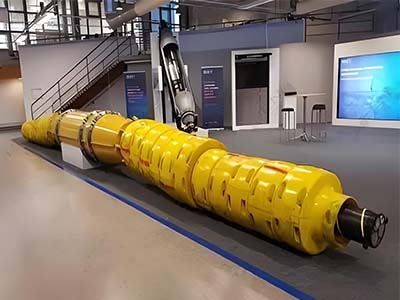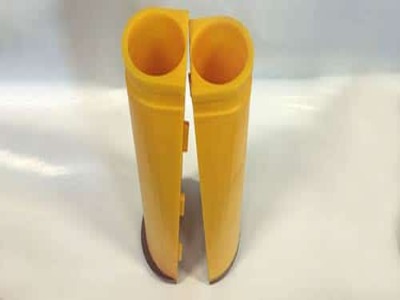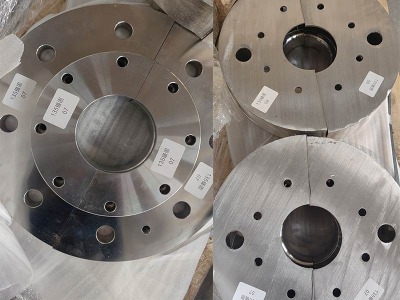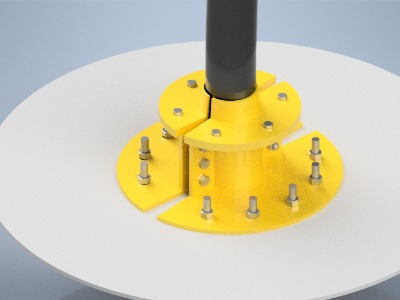In the realm of telecommunications, the protection of communication cables is paramount to ensure uninterrupted service and data integrity. Bend restrictors – especially high-performance options like polyurethane bend restrictors – play a crucial role in safeguarding these cables from the potential damage caused by excessive bending. This article delves into the importance of bend restrictors in protecting communication cables, their core functions, key features, and real-world applications, highlighting why they are indispensable for optimal cable performance.

Polyurethane Bend Restrictor: A Top Choice for Communication Cable Protection
When it comes to safeguarding communication cables, polyurethane bend restrictors stand out as a preferred solution. Polyurethane, a robust and versatile material, offers unique advantages that make it ideal for cable protection in diverse telecommunications environments. Unlike standard plastics, polyurethane combines exceptional durability with flexibility, ensuring that the bend restrictor can effectively limit cable bending while withstanding harsh conditions – a critical requirement for both indoor and outdoor telecom setups.
What sets polyurethane bend restrictors apart is their ability to maintain performance even under extreme stress. For instance, a bend restrictor 55MPa tensile test confirms that high-quality polyurethane models can endure significant mechanical tension without compromising their structural integrity. This tensile strength makes them suitable for high-stress applications like undersea cable networks and industrial telecom setups, where cables face constant pressure from movement or external forces.
The Core Role of Bend Restrictors in Communication Cable Protection
Bend restrictors are engineered to address one of the most common causes of communication cable failure: excessive bending. Their primary function is to limit the minimum bending radius of communication cables, a critical parameter that directly impacts signal quality and cable lifespan. Here’s how they deliver value:
1. Prevent Cable Damage & Signal Loss
Excessive bending can crack a cable’s outer sheath, damage internal conductors, or disrupt insulation – all of which lead to signal loss, data corruption, or complete cable failure. Bend restrictors control the bend radius to stay within the cable’s manufacturer-specified limits, protecting the internal structure from physical harm. This is especially vital for high-speed telecom cables (e.g., fiber optic cables used in 5G networks), where even minor damage can degrade performance.
2. Extend Communication Cable Lifespan
By preventing bending-related damage, bend restrictors significantly extend the service life of communication cables. For telecom operators and data center managers, this translates to lower replacement costs, reduced downtime, and improved return on investment (ROI). In high-density environments like data centers, where cable replacement requires extensive labor and operational disruption, this lifespan extension is particularly valuable.
Key Features of High-Quality Bend Restrictors for Telecommunications
Not all bend restrictors are created equal – the best options for communication cables boast features tailored to telecom-specific demands. Below are the non-negotiable traits to look for, with a focus on how they benefit telecom applications:
Durable Construction: As mentioned, materials like polyurethane or high-strength plastics are essential. These materials resist abrasion, impact, and wear, ensuring the bend restrictor lasts in high-traffic areas (e.g., data center floors) or harsh outdoor environments (e.g., rooftop telecom towers).
Customizable Bending Limits: Communication cables come in varying sizes and types (fiber optic, coaxial, twisted-pair). Top bend restrictors are customizable to match the specific minimum bending radius of each cable, ensuring a precise fit and maximum protection.
Easy Installation: Telecom teams need solutions that minimize downtime. Bend restrictors designed for tool-free or quick installation can be added to existing cable runs or new setups without disrupting ongoing service – a must for data centers or live broadcast facilities.
Environmental Resistance: Telecom cables are often exposed to UV radiation (outdoor setups), chemicals (industrial areas), and temperature fluctuations. High-quality polyurethane bend restrictors offer robust resistance to these elements, making them versatile for all telecom applications.
Proven Tensile Strength: A bend restrictor 55MPa tensile test is a benchmark for reliability. Restrictors that meet this standard can handle the tension of cable installation, movement, and environmental stress without breaking or deforming.
Bend Restrictor Applications in Telecommunications: Where They Matter Most
Bend restrictors are integral to nearly every telecom setup, from undersea networks to small data centers. Here are the key applications where their role is irreplaceable:
1. Undersea Communication Cables
Undersea cables carry 99% of global data traffic, making their protection critical. Polyurethane bend restrictors shield these cables from damage during installation (e.g., from ship anchors or deployment equipment) and ongoing use (e.g., from ocean floor currents or seismic activity). Their 55MPa tensile strength and corrosion resistance make them ideal for this harsh, high-stakes environment.
2. Data Centers
Data centers rely on high-density cabling to support cloud computing, AI, and big data. Here, bend restrictors prevent damage from foot traffic, equipment movement, or accidental cable pulls. They also improve cable organization, making maintenance easier and reducing the risk of human error during upgrades.
3. Broadcasting & 5G Networking
Broadcasting stations and 5G base stations use sensitive cables that require consistent signal integrity. Bend restrictors ensure these cables maintain their specified bend radius, even in tight spaces (e.g., behind broadcast consoles or inside 5G antenna enclosures). This prevents signal degradation, ensuring clear audio/video transmission and reliable 5G connectivity.
4. Industrial Telecommunications
In factories, refineries, or manufacturing plants, telecom cables face mechanical stress, chemical spills, and extreme temperatures. Polyurethane bend restrictors provide an extra layer of protection, shielding cables from these hazards while limiting bending. This ensures uninterrupted communication between industrial machines and control systems.
Why Bend Restrictors Are Non-Negotiable for Modern Telecommunications
As demand for high-speed, reliable communication grows (driven by 5G, IoT, and remote work), the pressure on telecom infrastructure intensifies. Bend restrictors – particularly polyurethane bend restrictors with proven tensile strength (e.g., passing 55MPa tensile tests) – are no longer optional; they’re a critical component of resilient telecom networks.
By selecting the right bend restrictor for your cable type and environment, you can: protect against costly downtime, extend cable lifespan, maintain signal integrity, and ensure compliance with industry standards. For telecom operators, data center managers, and network engineers, investing in high-quality bend restrictors is an investment in the reliability and performance of their core infrastructure.





